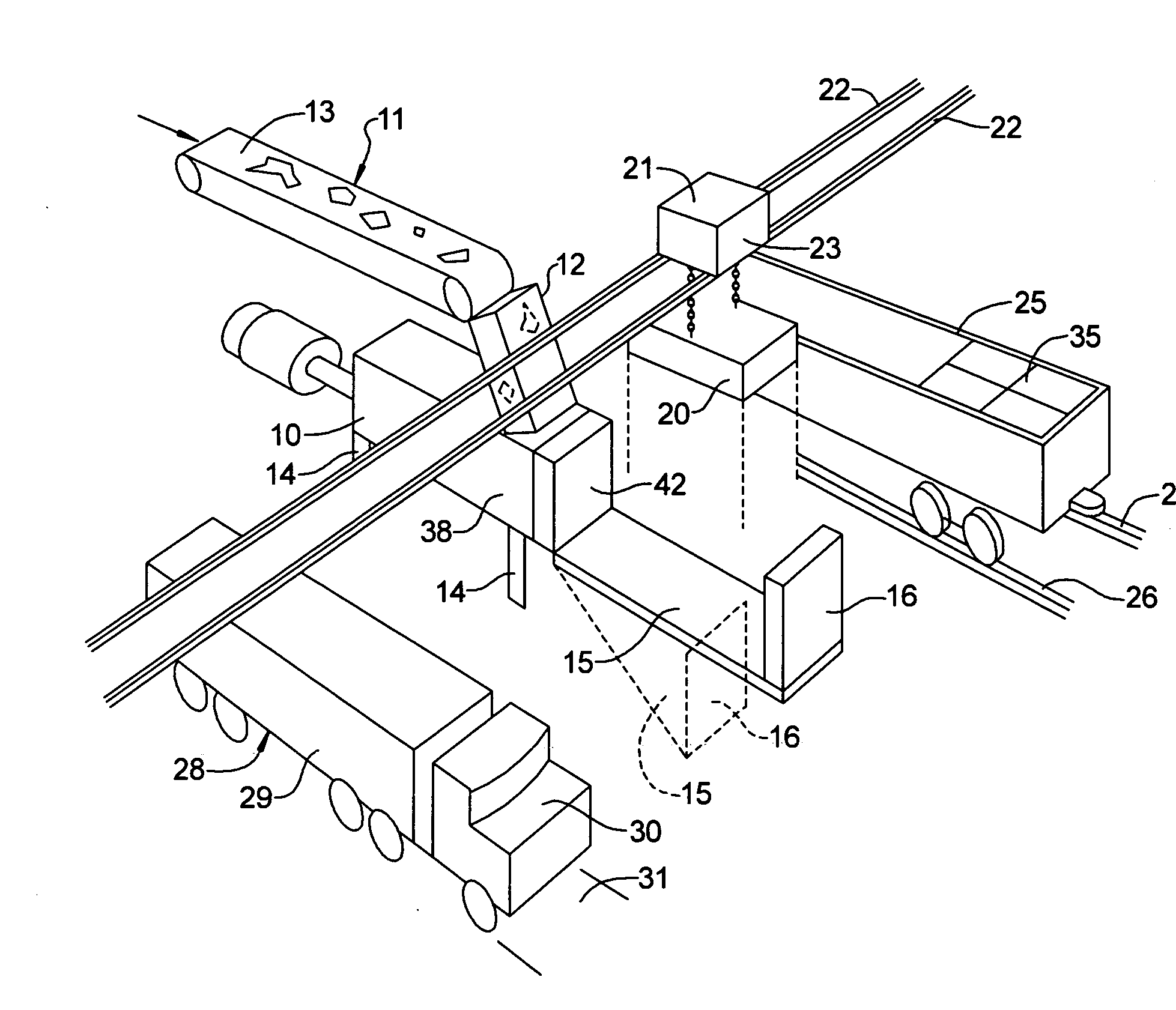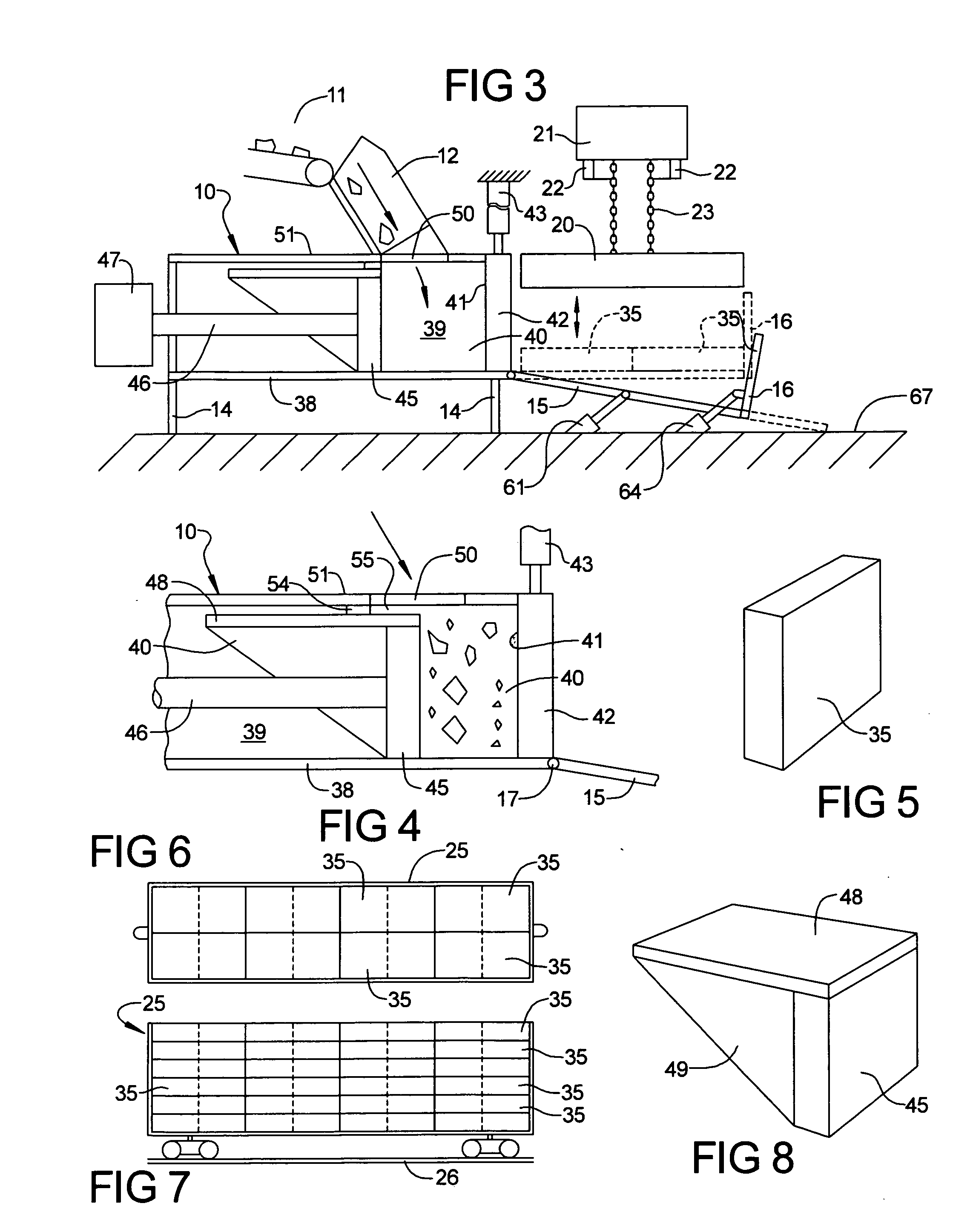System for efficiently transporting large quantities of initially, loose pieces of scrap sheet metal
a technology of scrap sheet metal and efficient transportation, which is applied in the direction of load-engaging elements, lifting devices, electrical devices, etc., can solve the problems of large quantities of scrap trim or excess material surrounding stamped parts, large quantities of scrap trim or excess material, and large labor and time for the loading process. , the effect of reducing labor costs and reducing the cost of handling and transporting scrap metal
- Summary
- Abstract
- Description
- Claims
- Application Information
AI Technical Summary
Benefits of technology
Problems solved by technology
Method used
Image
Examples
Embodiment Construction
[0026]FIG. 1 illustrates, schematically, the overall system and its components. The system includes a compressor 10 and a conveyor arrangement 11 which terminates in a chute 12 that continuously deliver scrap sheet metal pieces 13 from the manufacturing plant to the compressor. The compressor is schematically shown as being supported upon suitable columns or other supports 14.
[0027]Extending forwardly of the compressor is a table or platform 15 which receives slabs that are discharged from the compressor. The table includes an end extension portion 16 which may act as a stop for slabs sliding down the table or, alternatively, as a steep, downwardly sloped, portion of the table for discharging slabs from the table. The table is normally tilted at a downward angle and can be raised into a horizontal position as indicated in dotted lines in FIG. 3. In order to tilt and raise the table, the table may be pivotally connected by a hinge arrangement 17 and lift hydraulic components.
[0028]Re...
PUM
 Login to View More
Login to View More Abstract
Description
Claims
Application Information
 Login to View More
Login to View More - R&D
- Intellectual Property
- Life Sciences
- Materials
- Tech Scout
- Unparalleled Data Quality
- Higher Quality Content
- 60% Fewer Hallucinations
Browse by: Latest US Patents, China's latest patents, Technical Efficacy Thesaurus, Application Domain, Technology Topic, Popular Technical Reports.
© 2025 PatSnap. All rights reserved.Legal|Privacy policy|Modern Slavery Act Transparency Statement|Sitemap|About US| Contact US: help@patsnap.com



